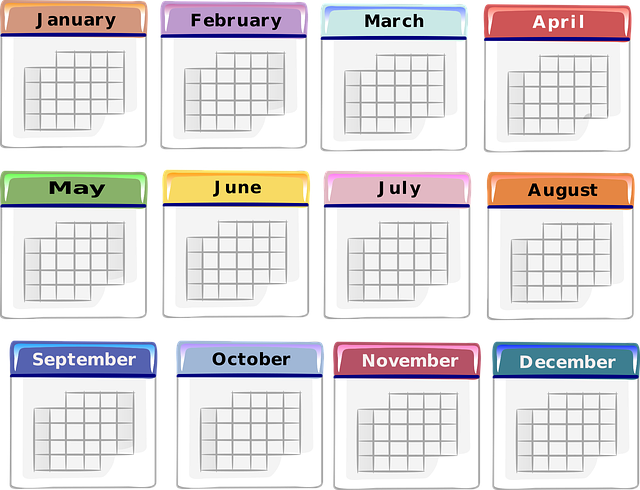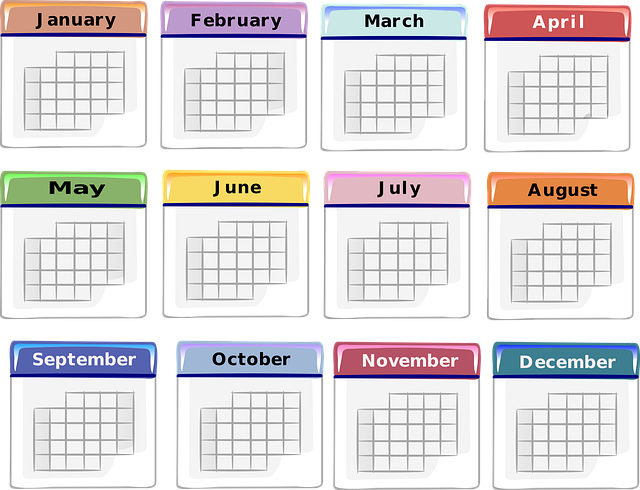Registered Training Organisations (RTOs) face time management challenges due to complex scheduling. Implementing automated scheduling through calendar syncing tools revolutionizes operations, enhancing collaboration and efficiency. These tools provide real-time schedule visibility on preferred devices, eliminating manual errors and double-booking risks. Choosing the right calendar syncing software tailored for RTOs, integrating it with existing systems, setting up automated rules, personalizing alerts, and refining performance boosts user experience. Measuring KPIs like reduced conflicts, improved resource utilization, and enhanced student satisfaction ensures continuous improvement. Embracing a data-driven culture keeps RTOs agile, efficient, and responsive in time management.
In today’s fast-paced landscape, efficient time management is key for Registered Training Organisations (RTOs) to thrive. Navigating complex schedules and ensuring optimal resource allocation can be a challenging task without the right strategies. This article explores the transformative power of calendar syncing for RTOs. By harnessing the potential of automated scheduling, organisations can boost efficiency and streamline operations, ultimately providing a competitive edge in the education sector. Discover how the right calendar tools can revolutionise time management for your RTO.
- Understanding the Challenges of Time Management in RTOs
- The Power of Calendar Syncing: Streamlining Operations
- Benefits of Automated Scheduling for RTOs
- Choosing the Right Calendar Tools for Efficient RTO Management
- Implementing Calendar Syncing: A Step-by-Step Guide
- Measuring Success and Continuous Improvement
Understanding the Challenges of Time Management in RTOs

Time management is a significant challenge for Registered Training Organisations (RTOs) due to their complex and dynamic scheduling requirements. With numerous courses, instructors, and learners to coordinate, manual tracking and planning can become cumbersome and error-prone. This often leads to delays in student onboarding, inconsistent delivery schedules, and suboptimal resource allocation.
Automated scheduling using calendar syncing tools is a game-changer for RTOs. By integrating their calendars and synchronizing them across different platforms, RTOs can streamline their operations. Automated calendar syncing ensures that all team members have access to the most up-to-date information, enabling efficient collaboration and reducing the risk of double-booking or scheduling conflicts. This, in turn, boosts overall efficiency and allows RTOs to provide a seamless learning experience for their students.
The Power of Calendar Syncing: Streamlining Operations

In today’s fast-paced business environment, effective time management is a cornerstone for success. For Registered Training Organisations (RTOs), where scheduling and resource allocation are complex tasks, calendar syncing offers a powerful solution. By automating scheduling processes, RTOs can streamline their operations, ensuring every team member is aligned with the latest event details. This unified approach eliminates the hassle of manual updates across multiple calendars, reducing errors and double-bookings.
Calendar tools designed for RTOs enhance efficiency by providing real-time visibility into upcoming training sessions, assessments, and administrative meetings. With automated syncing, staff members can access up-to-date schedules on their preferred devices, facilitating seamless collaboration and communication. This level of organisation not only boosts productivity but also contributes to a positive learning environment, where students and trainers alike enjoy the benefits of streamlined, efficient planning.
Benefits of Automated Scheduling for RTOs

In today’s fast-paced world, efficient time management is paramount for Registered Training Organisations (RTOs) to deliver quality training and stay competitive. Automated scheduling through calendar syncing offers a game-changer solution. By integrating their calendars with robust tools designed for RTOs, organisations can instantly boost efficiency. This ensures that schedules are up-to-date, visible to all stakeholders, and free from manual errors, streamlining the entire planning process.
Automated scheduling allows RTOs to effortlessly manage multiple training courses, workshops, and assessments, accommodating various participant needs and availability. It enables seamless communication with students, facilitators, and administration staff, fostering transparency and fostering a sense of community within the organisation. Ultimately, this level of efficiency can lead to improved student satisfaction and retention rates, solidifying the RTO’s reputation as a trusted provider in its field.
Choosing the Right Calendar Tools for Efficient RTO Management

Choosing the right calendar tools is paramount for any Registered Training Organisation (RTO) aiming to enhance its time management and operational efficiency. With various options available, RTOs should consider their unique needs and preferences when selecting a solution for automated scheduling. The ideal tool should offer seamless calendar syncing across multiple platforms, allowing for real-time updates and visibility of schedules. This ensures that all stakeholders, from administrators to trainers and students, work with the most current information.
An efficient calendar management system for RTOs streamlines the booking process, reduces manual efforts, and minimises conflicts. Automated scheduling features enable quick course creation, resource allocation, and timely reminders, ultimately boosting overall productivity. By investing in robust calendar tools, RTOs can significantly improve their operational workflow, cater to diverse training needs, and deliver a more seamless experience for all participants.
Implementing Calendar Syncing: A Step-by-Step Guide

Implementing Calendar Syncing for Registered Training Organisations (RTOs) is a straightforward yet powerful way to transform time management. Here’s a step-by-step guide to get you started:
1. Choose the Right Tool: Select a calendar syncing software tailored for RTOs, which offers automated scheduling and seamless integration with popular training management systems. Look for features like event sharing, real-time updates, and customisable alerts.
2. Integrate with Existing Systems: Connect your chosen tool to your RTO’s existing platforms. This could include your training calendar, registration system, and even email clients. Ensure all data is securely transferred and synchronised across devices.
3. Set Up Automated Scheduling: Utilise the software’s capabilities to automate scheduling processes. Define rules for course availability, instructor assignments, and resource allocation. Set reminders for upcoming sessions, ensuring smooth operations and minimising no-shows.
4. Personalise Alerts and Notifications: Tailor notifications to suit your RTO’s needs. Configure alerts for staff and students regarding schedule changes, course registrations, or important deadlines.
5. Train Your Team: Educate your team on the new system. Offer training sessions or create tutorials to ensure everyone understands how to use the calendar syncing tool effectively, maximising its benefits.
6. Test and Refine: After implementation, monitor the system’s performance. Test different scenarios, gather feedback from users, and make adjustments as needed to enhance efficiency and user experience.
Measuring Success and Continuous Improvement

Measuring Success and Continuous Improvement plays a pivotal role in optimising the impact of calendar syncing for Registered Training Organisations (RTOs). By setting clear KPIs, such as reduced scheduling conflicts, improved resource utilisation, and enhanced student satisfaction, RTOs can objectively assess the effectiveness of their automated scheduling systems. Tools that provide detailed analytics on attendance rates, course completion times, and feedback from trainees are invaluable for gauging progress and identifying areas for refinement.
Continuous improvement is driven by leveraging these insights to fine-tune calendar syncing processes. Regular reviews should focus on streamlining workflows, enhancing communication channels, and adapting scheduling algorithms based on student behaviour and resource availability. Embracing a culture of data-driven decision making ensures that the RTO remains agile, responsive, and at the forefront of efficient time management in the ever-evolving educational landscape. This iterative approach ultimately boosts overall efficiency for both staff and students alike.
Calendar syncing is a game-changer for Registered Training Organisations (RTOs) looking to master time management. By implementing automated scheduling and choosing the right calendar tools, RTOs can streamline their operations, boost efficiency, and ensure optimal resource allocation. The benefits are clear: improved RTO performance, enhanced student experiences, and better overall organisation. It’s time for RTOs to embrace calendar syncing as a powerful strategy for success in today’s competitive landscape.
